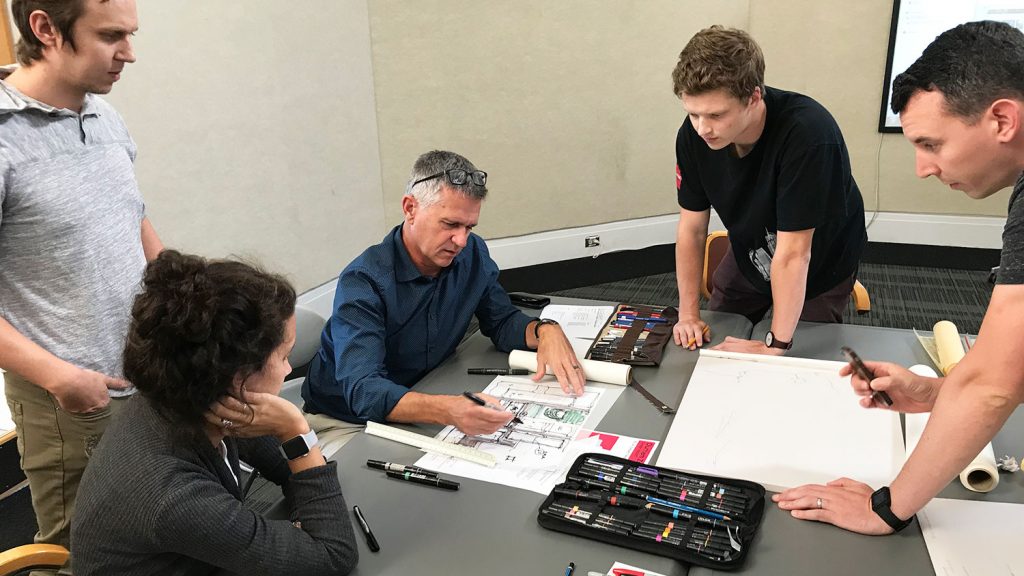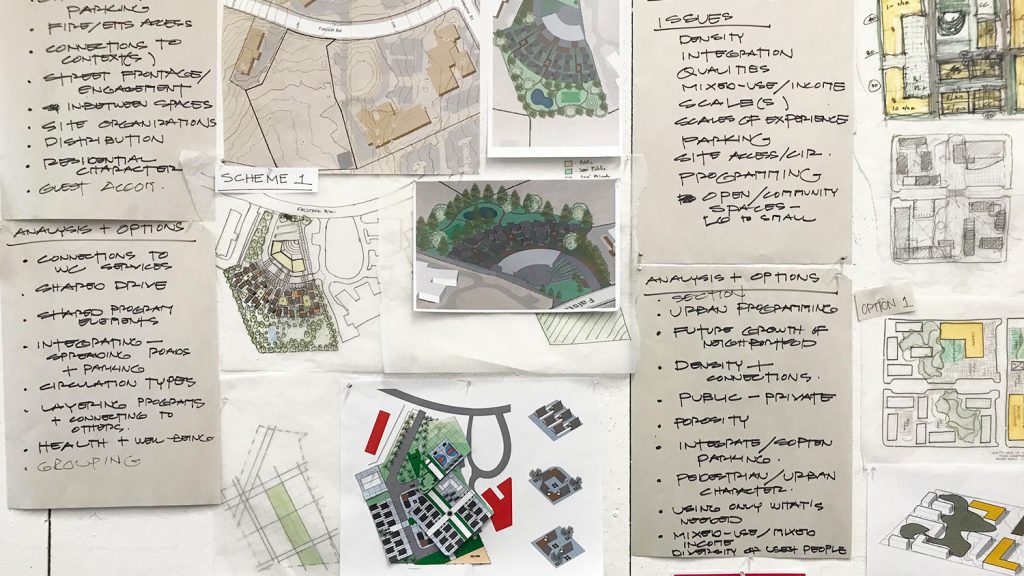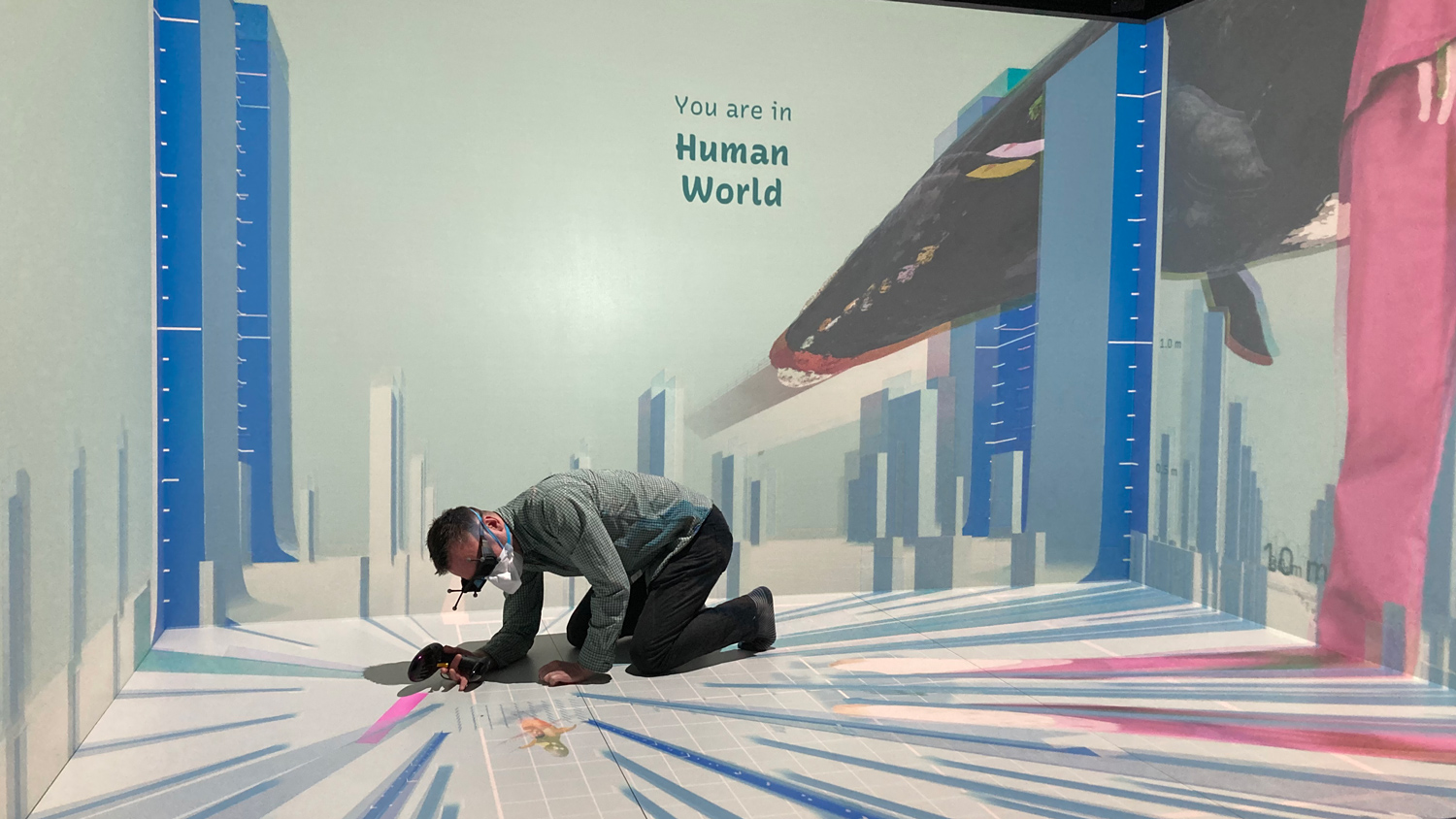Micro Houses Have Macro Impact

Micro houses may have inspired a new generation of homeowners to scale (way) down – spawning popular TV shows in the process – but they’re more than just a design trend. They have the potential to alleviate veteran homelessness in North Carolina.
And a class of NC State architecture students, under the leadership of architecture professor Tom Barrie, is helping lead the way.
“There is a concerning number of homeless veterans nationally and in our state,” Barrie says. “Last year the North Carolina Coalition to End Homelessness approached us to contract with them on a project to build permanent micro house communities for homeless veterans. They were interested in real solutions on actual sites.”
This concept of service learning is fundamental to many of Barrie’s studio classes, offered through the School of Architecture’s Affordable Housing and Sustainable Communities Initiative, which is part of the school’s Public Interest Design Studios program. The initiative aims to provide educational resources and innovative solutions to the housing and urban challenges that North Carolina communities face.
In other words, Barrie and his colleagues are developing citizen architects.

Building a Playbook
“At the beginning of the process, we felt that involving the professors and students at NC State would be a good idea,” says Terry Allebaugh, community impact coordinator for the North Carolina Coalition to End Homelessness. “NC State has an internationally recognized College of Design, so we knew they would give us great insights into how we might be able to design these houses.”
Eleven graduate students worked together on the project in Barrie’s studio class last fall. They dove deep into research on everything from veterans’ issues to zoning regulations in order to develop a valuable resource for the project sponsor to use.
Allebaugh says their extensive research will be compiled into a “playbook” that will guide the establishment of micro house communities for homeless veterans across the state.

One of the students, Alyssa Dohler, interviewed leaders of micro house villages across the nation to learn more about housing ownership structures and zoning and land use regulations.
“She came back with lots of good information about different ways that others have approached similar projects,” Allebaugh says. “So the students have gotten a full picture of an issue and a design that’s not only about the bricks and mortar, but about coming up with a solution that benefits the veterans and the communities in which they’ll live.”
Dohler, an architecture graduate student, says the experience was more than worthwhile.
“The micro housing project is an exciting opportunity to explore a solution to a real-world problem and to interact with stakeholders considering actual budgets and timelines,” she says. “Hopefully it will produce new and engaging ways of looking at the affordable housing gap and provide practical solutions to a pressing problem in North Carolina.”
A Win-Win Situation
Three potential locations for the first micro house villages have been identified – in Raleigh, Durham and Garner – and Allebaugh says he hopes to have projects underway by the end of 2019, either on these sites or at other locations around the state.
“It’s been a real joy working with the NC State students,” Allebaugh says. “I have found them to be a very engaging and bright group of people who have come forward with some pretty cool ideas that will be utilized as we look toward a next phase in 2019.”
Barrie says the studio project is a win-win for all involved, especially the students.
“I think this studio is a very powerful way to teach design,” Barrie says. “There is a lot of skill-building, especially research skills, when students engage in projects of this type. At the College of Design, we have a number of faculty who also share this viewpoint and are committed to graduating students who see the roles of the profession beyond professional services.”
Everyone should have a right to housing: a retreat, a safe place to call home.
Scott Needham, another architecture graduate student involved in the project, says he hopes his team’s work will serve as a template for future developments that house those in need.
“Everyone should have a right to housing: a retreat, a safe place to call home,” Needham says. “By designing a community to encourage support and positive interaction among its residents we are hopefully bringing this idea closer to reality.”
This post was originally published in NC State News.
- Categories:


